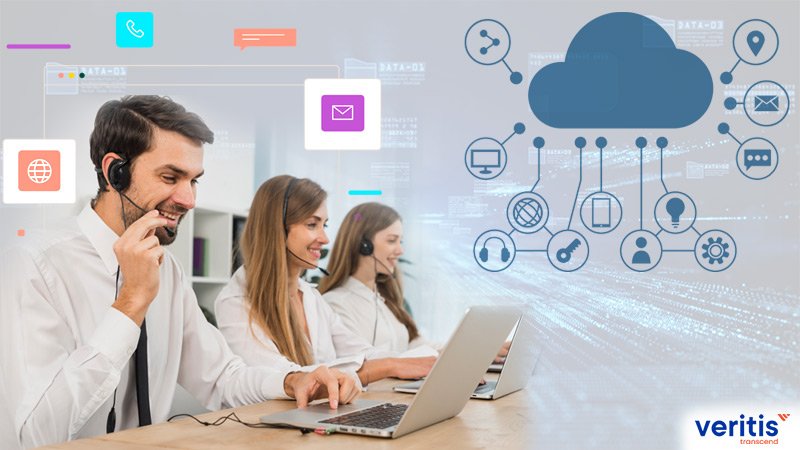
10 Key Security Considerations for Cloud Migration and Implementation
10 key best practices
Increasing internet penetration, the rise of smart devices, and the Cloud Security Considerations are three significant factors determining how businesses work today. These three factors brought ease within business functioning and operations, thus enhancing productivity. However, this ease of access contributes to potential risks in a cloud environment.
Cloud technology is breaking down network barriers as mainstream IT businesses’ demand for various functions is skyrocketing. At this juncture, companies must be cautious about how their data traverses networks and its high susceptibility to outside threats.
Here are 10 key Security Considerations for Cloud Migration You Need to Check Before Cloud Adoption:
Factors Before ‘Cloud Selection’:
1. Data Security
Get complete clarity on how your cloud service provider is handling your data. This includes ‘what and how data is being collected,’ ‘ data movement,” between users and the cloud,” data storage,’ and ‘data entry, ‘ among others. Beyond this, you need a complete idea about possible threat actors to your data.

2. Customer Support
Check how qualitative your vendor’s customer support is. Explore all possible ways to ensure all your queries can be addressed every time. Ask if they have chat support or a specific mailbox to report issues or seek clarifications whenever required. Please take a quick look at FAQs about their service offerings. Ensuring the reliability of a cloud vendor is critical to ensuring the security of your cloud environment.
3. Ease of Access
Give this a top priority when choosing a cloud service provider in the US. That means selecting a vendor with an easily understandable and accessible user interface. Hindrances in this area can lead to problems for your users and employees while operating in your cloud environment.
4. Legal Terms and Conditions
Most companies face challenges in this area because they need to read the terms of service thoroughly and adequately. Dedicate some time reading through the terms of service to understand your responsibilities, factors your vendor is committed to, and the shared responsibilities between your organization and the vendor.
During Cloud Implementation:
5. Authentication
After selection, the critical factor is how you secure your cloud accounts. Ensure strict two-factor authentication backed by unique and robust password combinations.

6. File Sharing
Ensure your file access and sharing mechanism is secure while being used by employers and users. Here is where identity and access controls are crucial. Make sure the correct credentials are only shared with the right people in the proper context and restricted to the remaining others.
Educate your staff on security protocols and ensure they follow a need-to-know basis before requesting access. In such a case, give access when required and restrict it when done. Beyond this, your cloud provider should track the file sharing and access activity.
7. File Sharing by Links
The most common cloud-style file sharing is in the form of a link. These web links point to a file or a folder with defined access rights. In such a case, make sure that the links’ no longer required‘ are disabled to ensure the entry of possible threats.
8. Be Aware of Settings
Understand what security settings your cloud provider has in place. Ensure you have complete visibility into who views your content. Ensure you know ‘read-only access’ and ‘read, write, and edit’ permissions.
9. Antivirus
Make sure the antivirus is updated across all levels of your organizational activities. Perform regular scans and closely monitor anti-ransomware, spam, malware, and strange events.
10. Monitor Remote Working
Ensure you have a central monitoring mechanism to monitor your remote working operations. Not all remote operations are performed on secure networks. So, ensure your staff doesn’t land on spam or threat-causing sites. Ensure the data between endpoints is happening in a safe environment.
You may create API-driven integration between your cloud service provider and the centralized Security Information and Event Management (SIEM) platform.

In Conclusion
These critical ten factors help you secure your cloud environment before cloud selection and during cloud implementation.
What are the key security considerations in cloud computing?
Ensure you have a central monitoring mechanism to monitor your remote working operations. All remote operations might not necessarily be on secure networks, so make sure your staff doesn't land on spam or threat-causing sites. Ensure the data between endpoints is happening in a safe environment.
What are the steps to security in the cloud?
Using cloud security solutions that allow for cloud monitoring, you can accomplish the following steps:
Step 1: Identify sensitive or regulated data
Step 2: Understand how sensitive data is being accessed and shared.
Step 3: Discover shadow IT (unknown cloud use).







